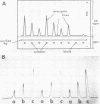Abstract
The extracellular polysaccharides produced as slime or capsule layers by bacterial pathogens of animals and plants have been often implicated as factors essential to pathogenesis. In the present study, virulence of the plant pathogen Erwinia amylovora was correlated with the ability to produce extracellular polysaccharide (EPS). EPS production by a series of field isolates and bacterio-phage-resistant mutants differing in the extent to which they cause symptoms in host tissues was examined by quantitation with a modified Laurell rocket immunoelectrophoresis assay. The amount of EPS produced as an easily removed capsular layer or slime on solid nutrient agar approximated the capacity to exhibit symptoms in host inoculation tests. Features common to the virulent isolates are mucoid colony morphology, sensitivity to EPS-specific bacteriophages [Sφ3 and PEal(h)], and ability to produce a characteristic EPS. Mutants selected for resistance to Sφ3 or nonmucoid colony morphology are deficient in EPS production and have lost the ability to multiply in host tissue and cause symptoms. We conclude that EPS may be directly involved in symptom expression and provide a function essential to the growth of the pathogen in host tissues.
Full text
PDF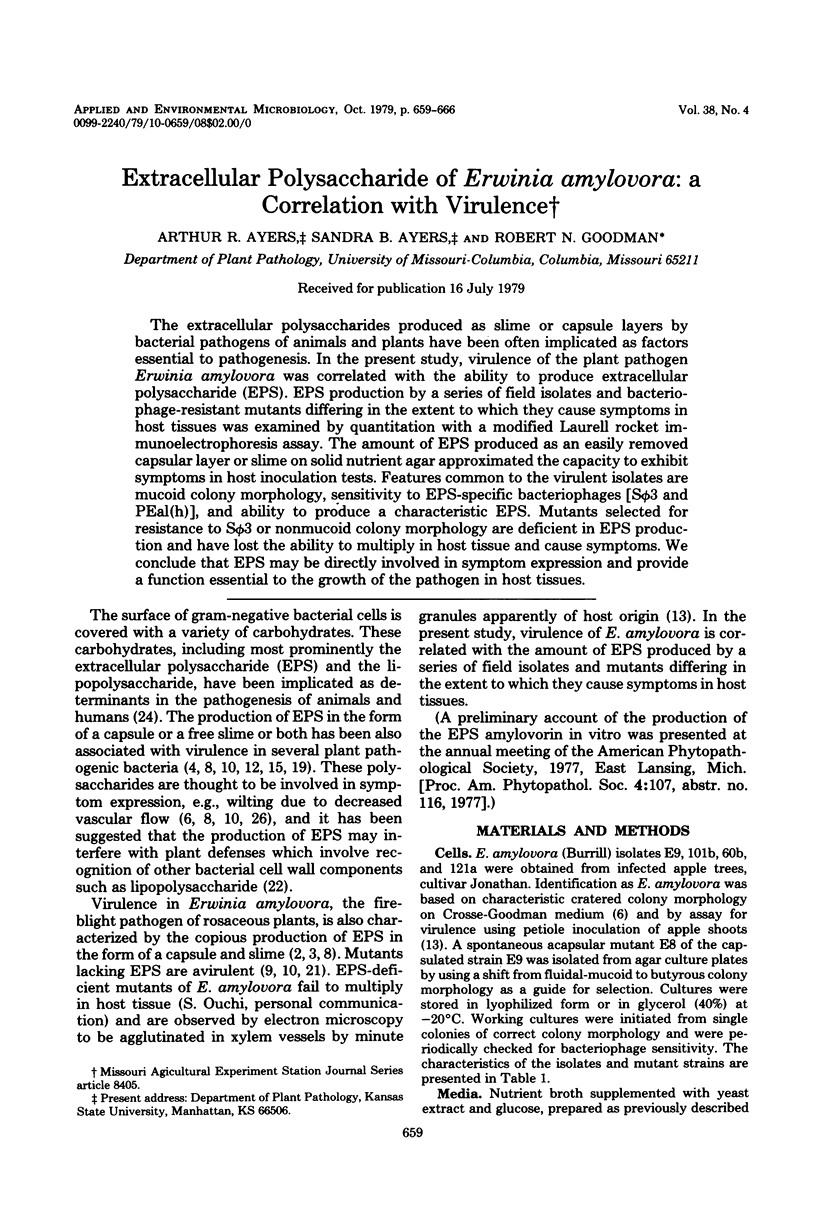
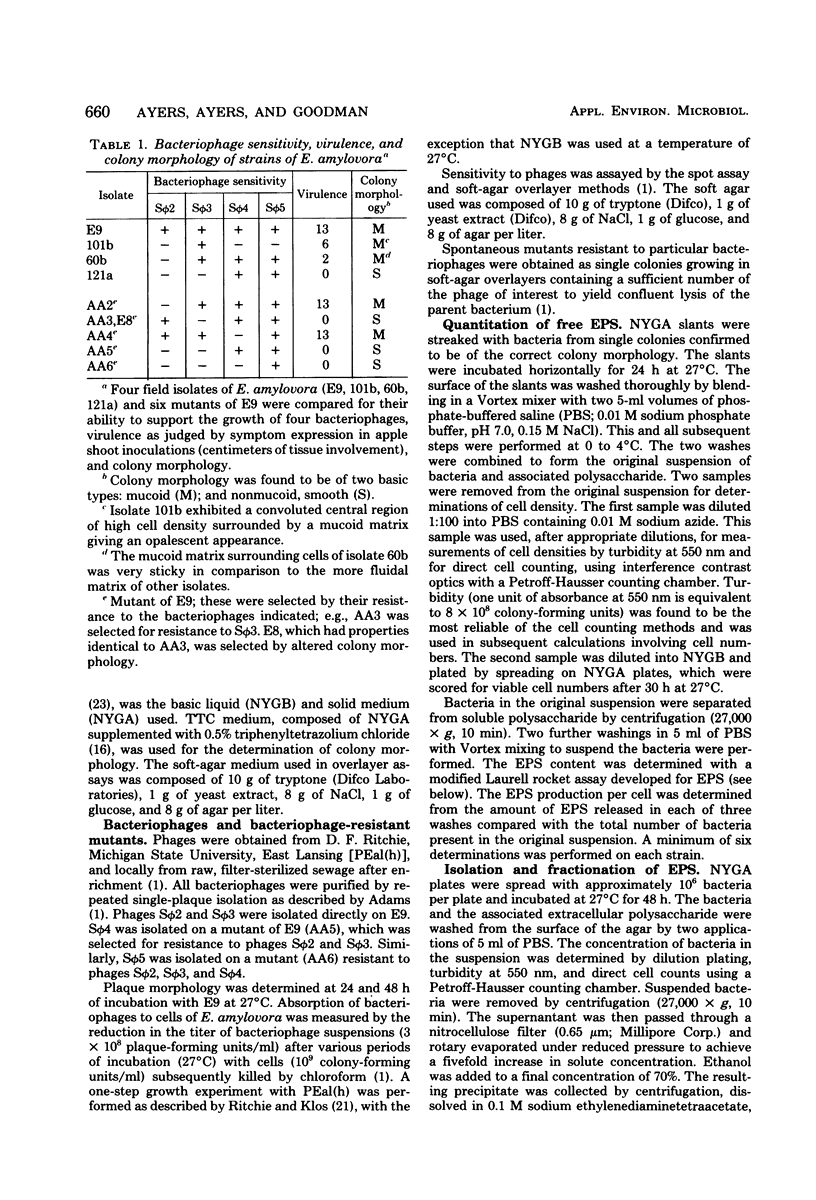
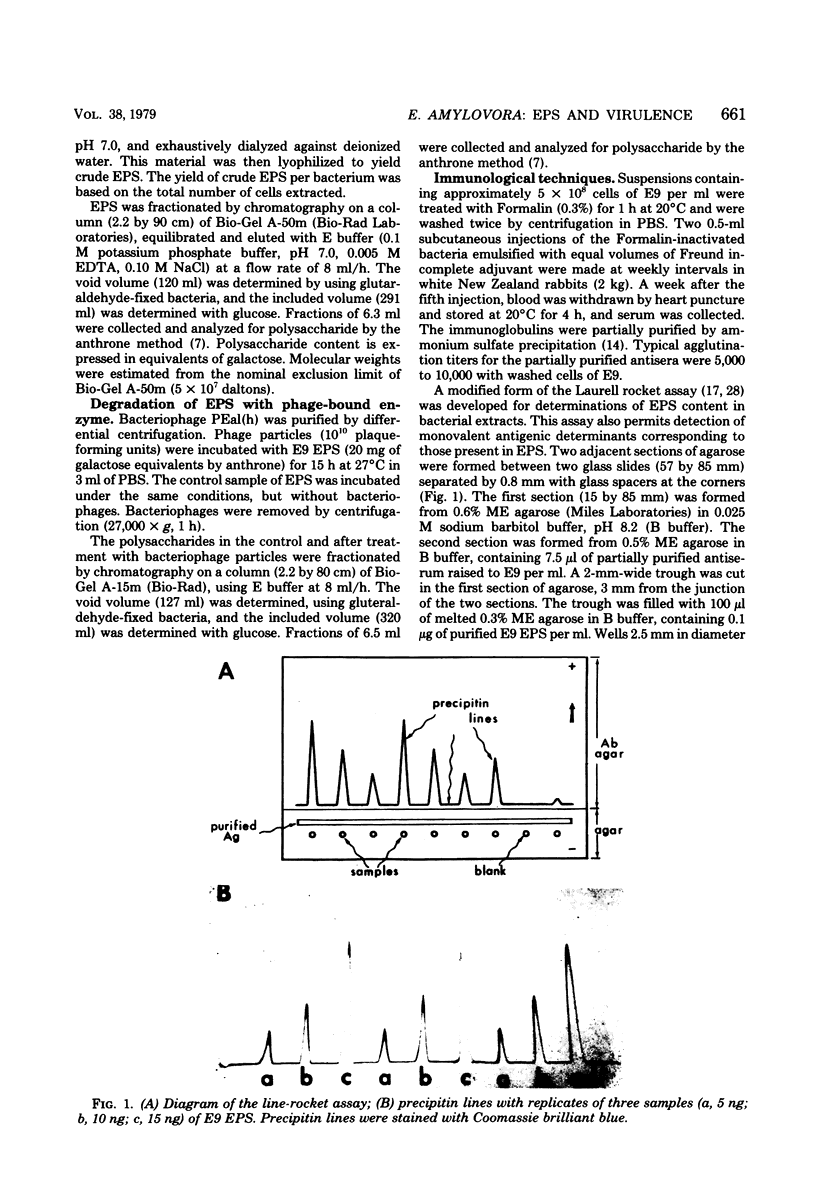
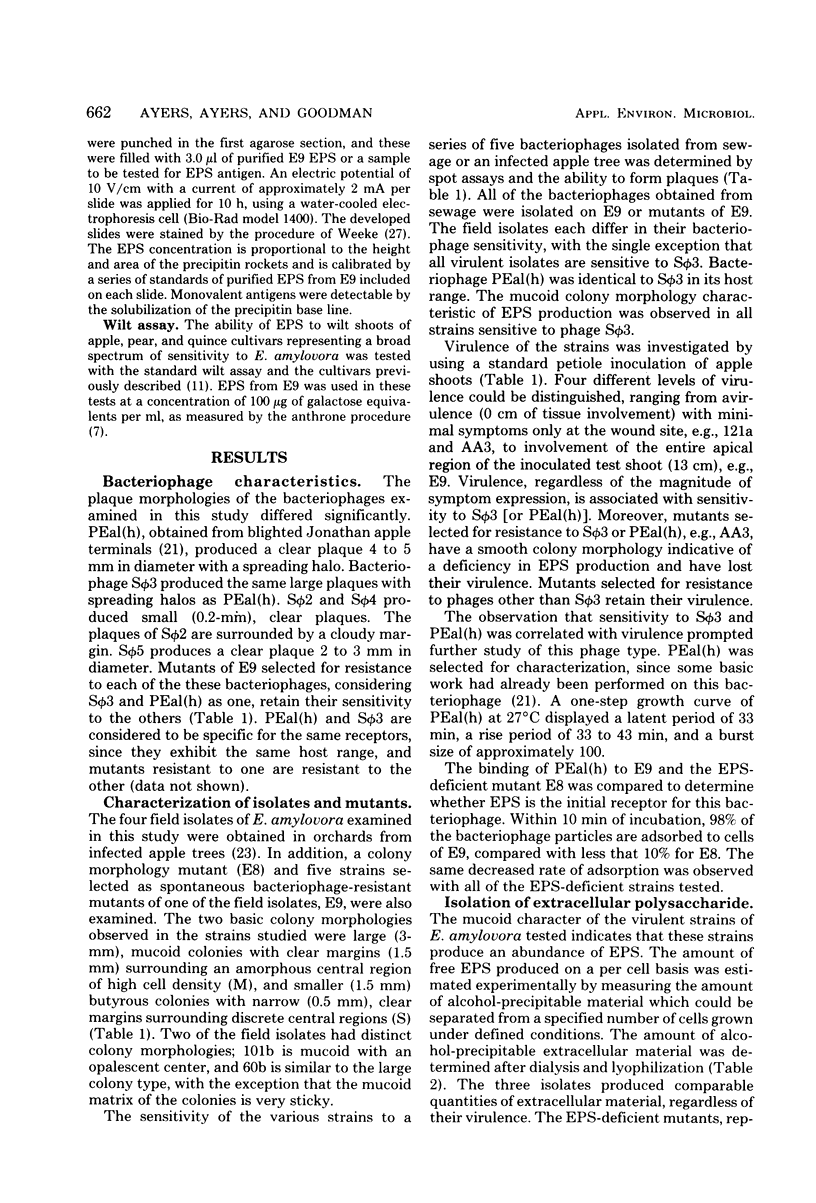
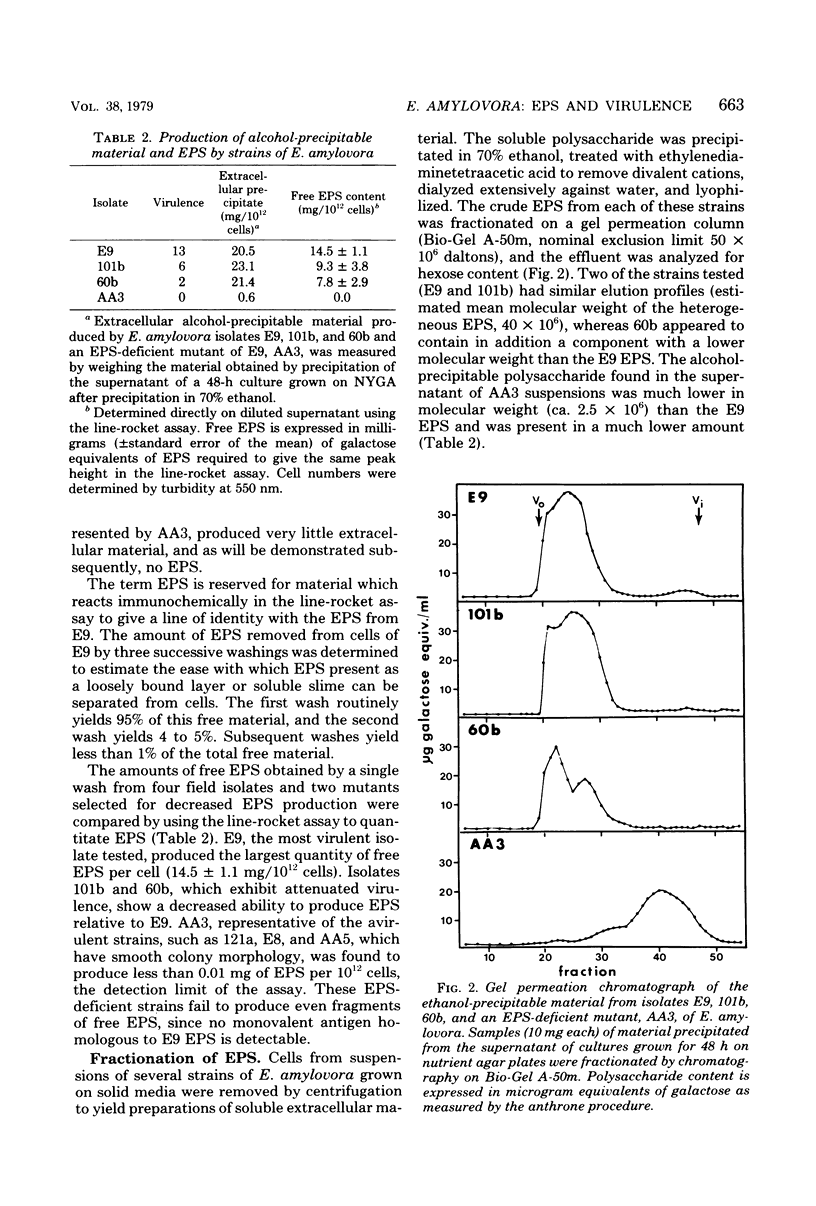
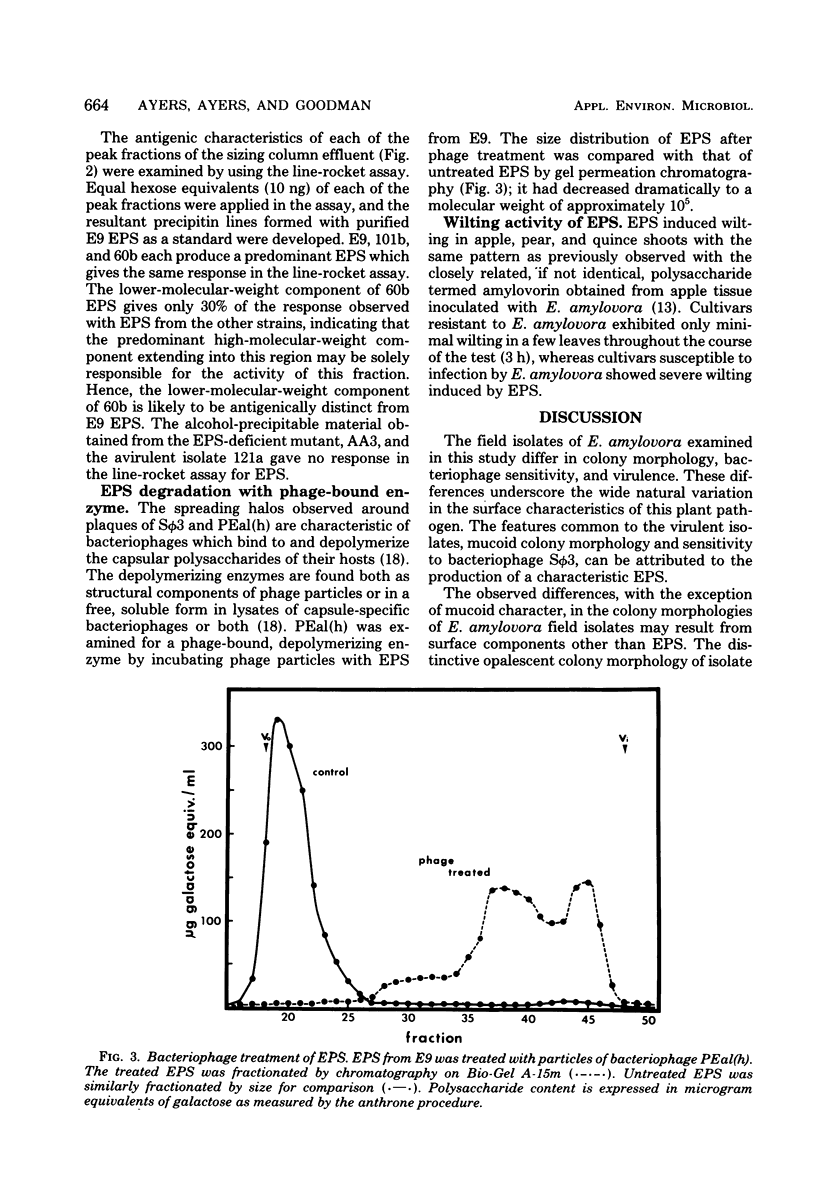
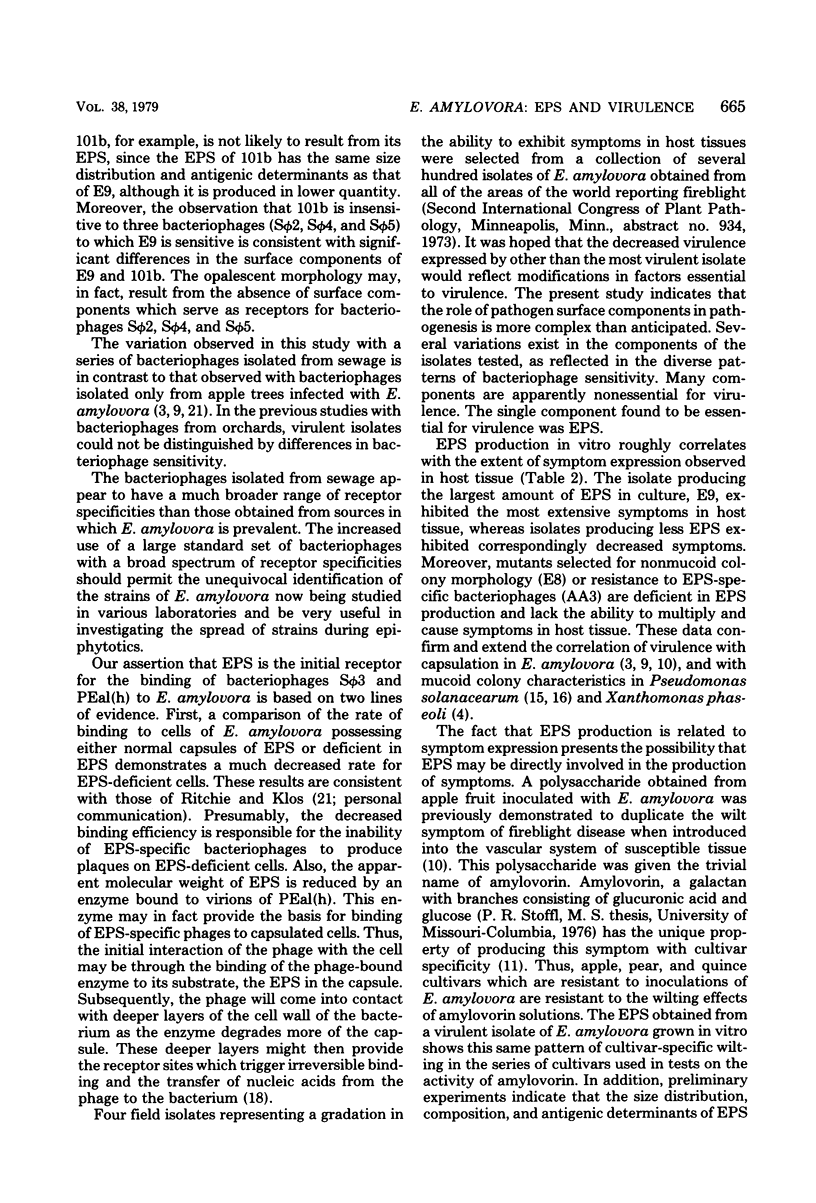
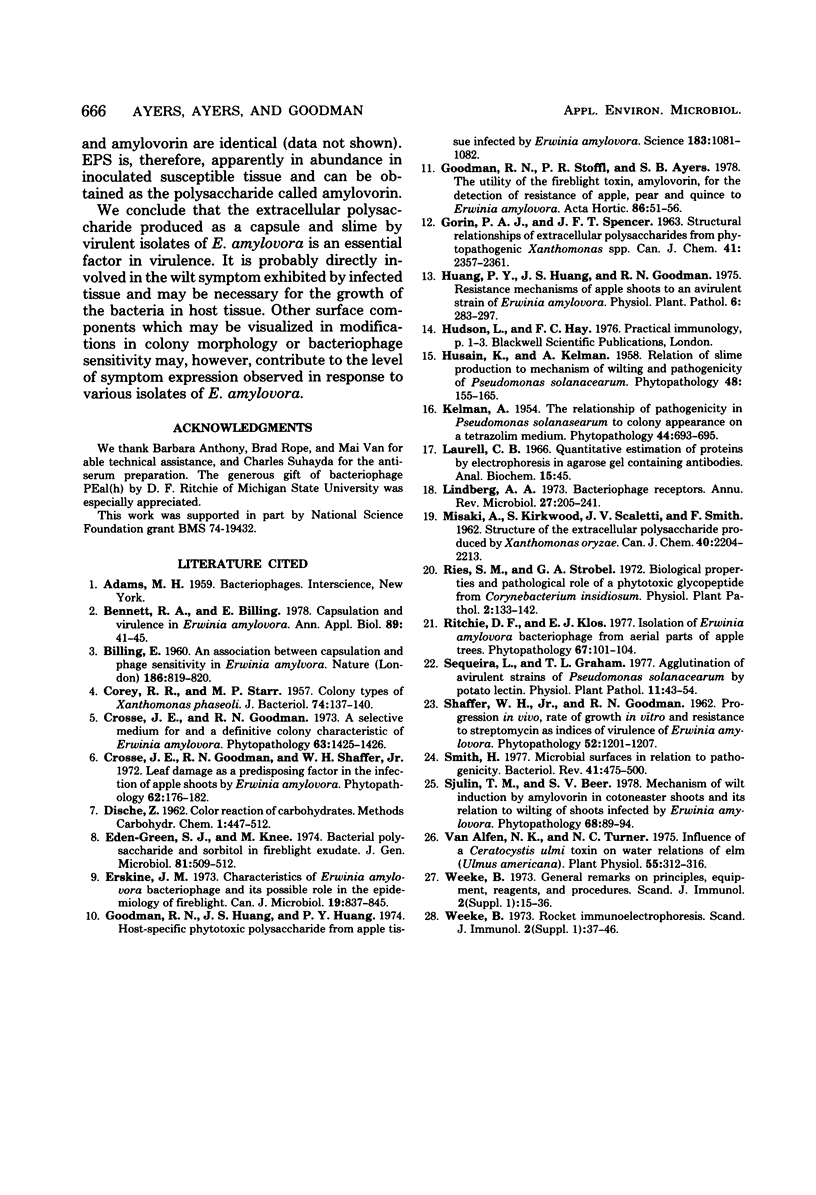
Images in this article
Selected References
These references are in PubMed. This may not be the complete list of references from this article.
- BILLING E. An association between capsulation and phage sensitivity in Erwinia amylovora. Nature. 1960 Jun 4;186:819–820. doi: 10.1038/186819a0. [DOI] [PubMed] [Google Scholar]
- COREY R. R., STARR M. P. Colony types of Xanthomonas phaseoli. J Bacteriol. 1957 Aug;74(2):137–140. doi: 10.1128/jb.74.2.137-140.1957. [DOI] [PMC free article] [PubMed] [Google Scholar]
- Erskine J. M. Characteristics of Erwinia amylovora bacteriophage and its possible role in the epidemology of fire blight. Can J Microbiol. 1973 Jul;19(7):837–845. doi: 10.1139/m73-134. [DOI] [PubMed] [Google Scholar]
- Goodman R. N., Huang J. S., Huang P. Y. Host-Specific Phytotoxic Polysaccharide from Apple Tissue Infected by Erwinia amylovora. Science. 1974 Mar 15;183(4129):1081–1082. doi: 10.1126/science.183.4129.1081. [DOI] [PubMed] [Google Scholar]
- Laurell C. B. Quantitative estimation of proteins by electrophoresis in agarose gel containing antibodies. Anal Biochem. 1966 Apr;15(1):45–52. doi: 10.1016/0003-2697(66)90246-6. [DOI] [PubMed] [Google Scholar]
- Lindberg A. A. Bacteriophage receptors. Annu Rev Microbiol. 1973;27:205–241. doi: 10.1146/annurev.mi.27.100173.001225. [DOI] [PubMed] [Google Scholar]
- Smith H. Microbial surfaces in relation to pathogenicity. Bacteriol Rev. 1977 Jun;41(2):475–500. doi: 10.1128/br.41.2.475-500.1977. [DOI] [PMC free article] [PubMed] [Google Scholar]
- Van Alfen N. K., Turner N. C. Influence of a Ceratocystis ulmi Toxin on Water Relations of Elm (Ulmus americana). Plant Physiol. 1975 Feb;55(2):312–316. doi: 10.1104/pp.55.2.312. [DOI] [PMC free article] [PubMed] [Google Scholar]
- Weeke B. A manual of quantitative immunoelectrophoresis. Methods and applications. 1. General remarks on principles, equipment, reagents and procedures. Scand J Immunol Suppl. 1973;1:15–35. doi: 10.1111/j.1365-3083.1973.tb03776.x. [DOI] [PubMed] [Google Scholar]
- Weeke B. Rocket immunoelectrophoresis. Scand J Immunol Suppl. 1973;1:37–46. doi: 10.1111/j.1365-3083.1973.tb03777.x. [DOI] [PubMed] [Google Scholar]



